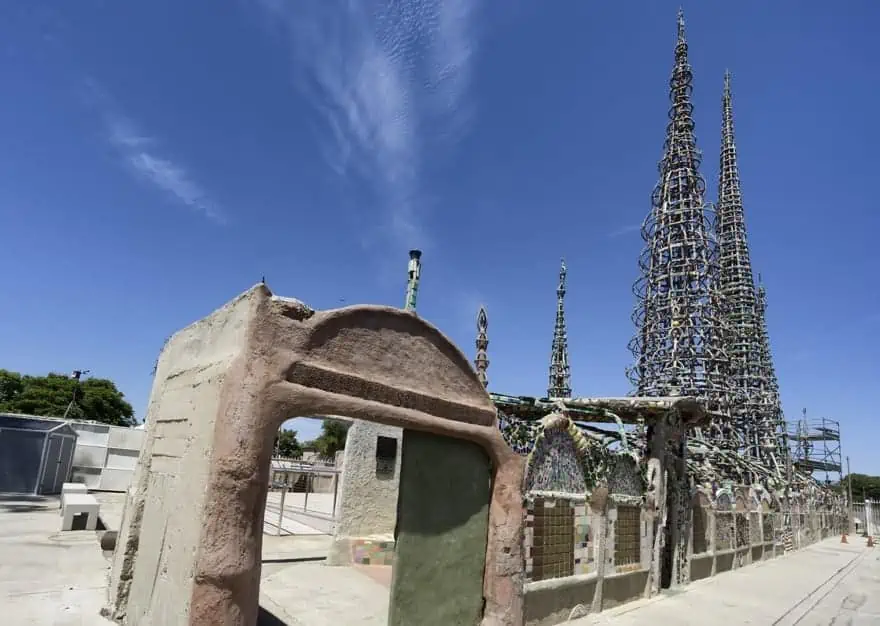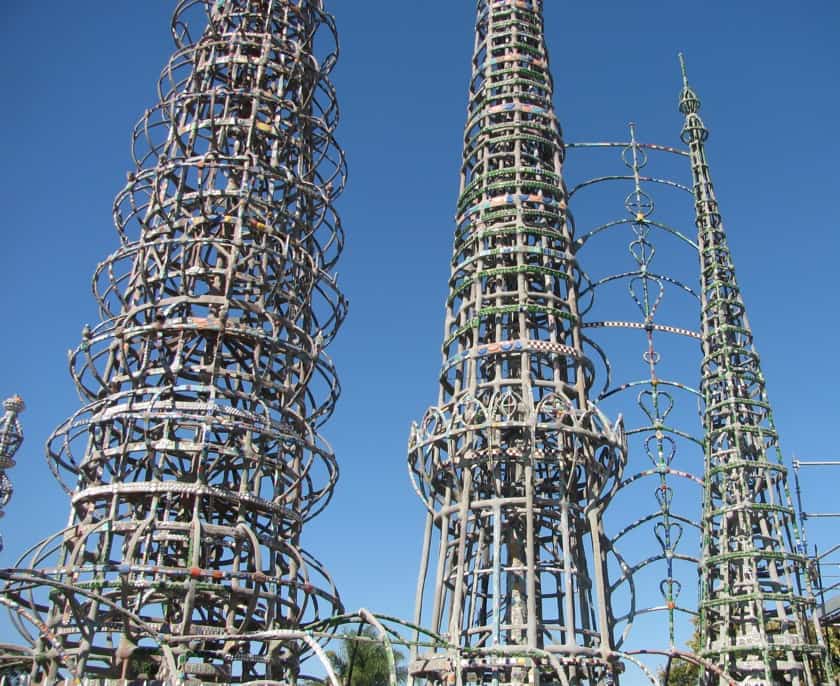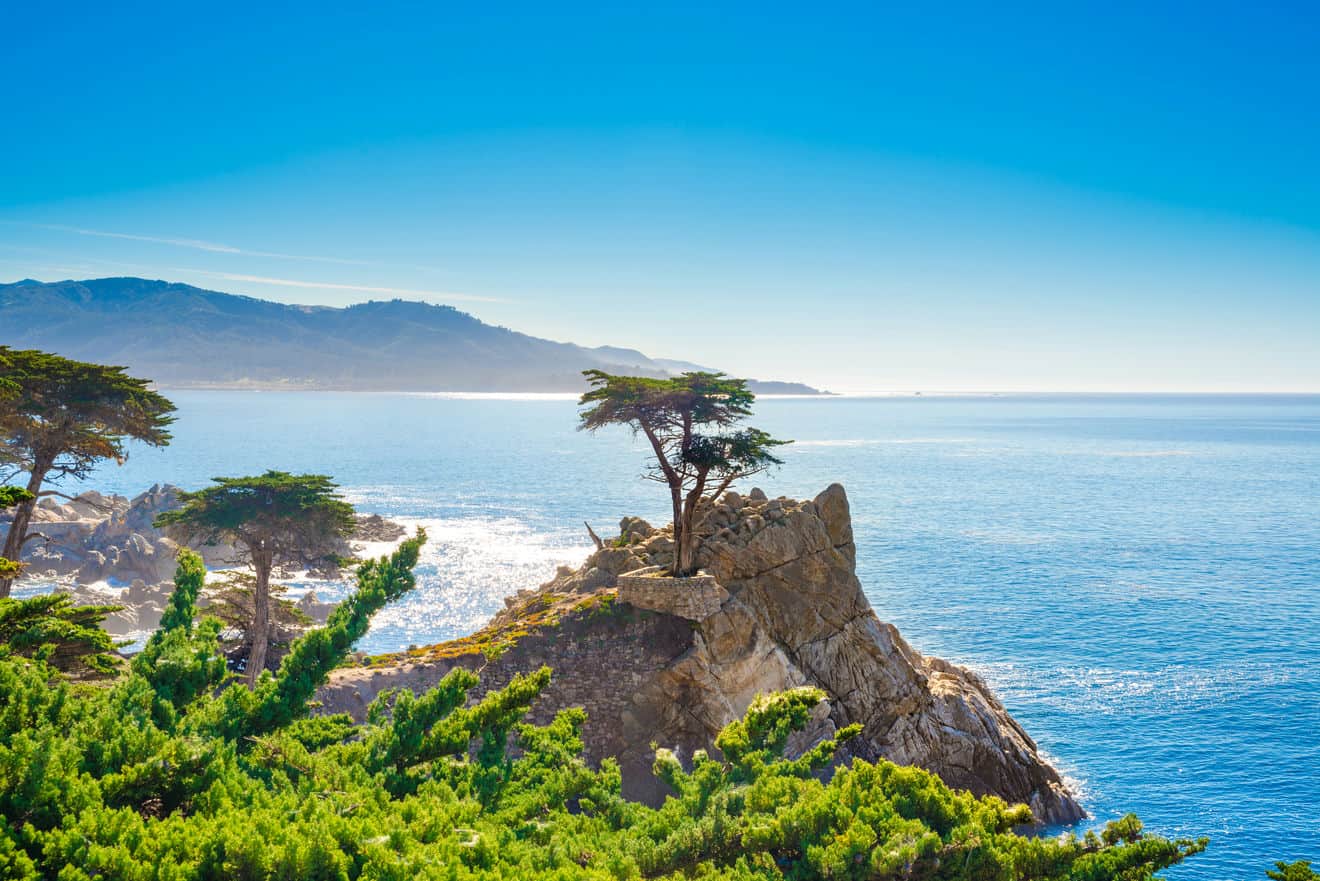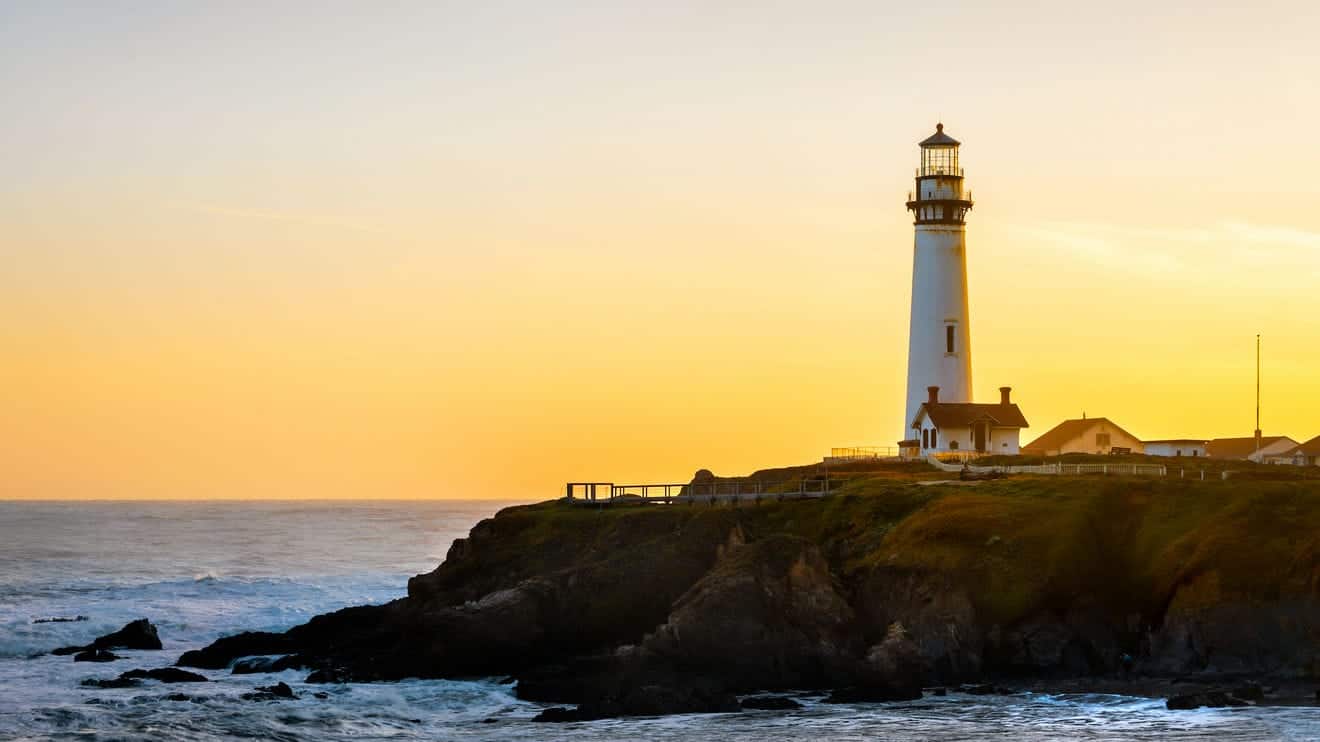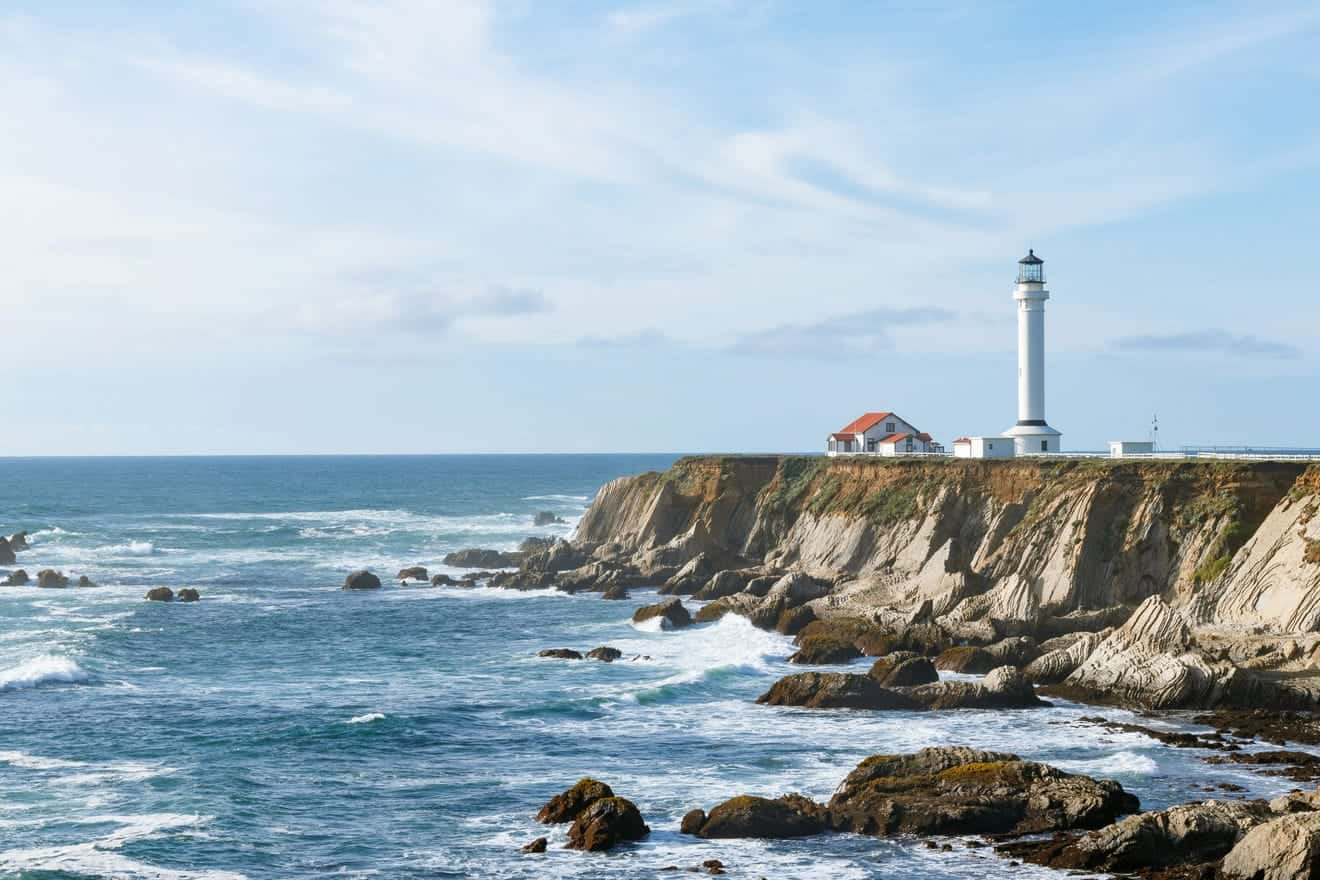Los Angeles is full of buildings, monuments and mansions made by famous architects and in most cases costing millions of dollars. Just think of the Walt Disney Concert Hall, MOCA, The Broad. But in this multifaceted city we also find an incredible work of art built over 30 years through the skills and tenacity of one man, completely at his own expense: these are the Watts Towers by Simon Rodia.
Contents
Watts Towers History
The Watts Towers are five towers with a total of 17 spires built of steel and clad with makeshift materials: many small objects such as pieces of glass, ceramics, shells, and stones collected and put together to form a mosaic of unique shapes and colors.
The artist who created them was a humble Italian immigrant from the province of Avellino, Sabato (Simon) Rodia, who arrived at Ellis Island in 1895 when he was only 15 years old. He would live in various American states working various jobs until settling in Watts, California in 1920. Here, upon returning from his daily work, he began his visionary work.
Watts was and still is a working-class neighborhood with few attractions and amusements for residents. Over the years, because of its location and history, Watts Towers has become a symbol of rebirth, of the strength and flair that one man can have, of asserting one’s identity, and also of the struggle for civil rights.
The fame of this semi-illiterate man’s tenacity soon became international. Suffice it to say that in 1967, Simon Rodia’s face appeared on the cover of the famous album Sgt. Pepper’s Lonely Hearts Club Band by the Beatles, alongside the much better-known face of Bob Dylan.
Directions
The Watts Towers are located within the Watts Towers of Simon Rodia State Historic Park at 1765 East 107th Street in the Watts neighborhood of Los Angeles.
The site is easily accessible by Metro Line A, the blue line. The best stop is 103rd Street/Watts Towers and from there you will have to walk about 8-10 minutes down Graham Avenue to reach them. I would recommend going during the daytime given the neighborhood’s ill-famed repute.
If you are driving, there is a parking lot called Watts Towers Arts Campus Parking right below the towers and you can leave your car there.
Read our tips on how to get around Los Angeles and how to rent a car.
Tours and Opening Hours
The towers are tall and clearly visible from the street. In fact, the tallest one reaches 100 feet. However, if you want to admire them up close as you enter the park, simply join a guided tour.
The tours are organized by the Watts Towers Art Center and explain the history and context in which the towers were erected, allowing you to get up close to them and admire them from underneath.
Tours take place:
- Thursday through Saturday from 10:30 a.m. to 3 p.m
- Sundays from 12:30 to 3:00 p.m.
Unfortunately, for safety reasons, in recent years the center has preferred to discontinue the tours and wait until the end of any maintenance work. Before the closure, the cost of the tours was $7.
Why Visit the Watts Towers?
“I wanted to accomplish something great and I succeeded,” these are the simple words of Italian immigrant Rodia to explain his work. Night after night, all by himself, his idea became reality. Every night between 1921 and 1954 the Rodia Towers increased in size and height and were adorned with salvaged materials selected by Rodia himself. For as many as 33 years he alone would always create, modify, strengthen and embellish the structure.
Some neighbors, intrigued at first by this particular work, begin to appreciate the work and see it as an embellishment of the inherently isolated and poor neighborhood. When in the 1950s, the city government decided to demolish them because they lacked building permits and were considered dangerous, citizen committees were formed to defend them and keep them intact.
Rodia suddenly left the Watts neighborhood in 1955 and moved in with his sister in Martinez, also in California. According to some because of health problems, according to others because he was tired of having to struggle with vandalism on the one hand and city permits that were not forthcoming on the other. He would never return to Watts or participate in any city petition stop his towers being torn down.
Eventually, however, on October 10, 1959, it would be the citizens of the neighborhood, along with some prominent architects and engineers, who would prove to the authorities that the towers would be able to withstand earthquakes and strong winds through a test with cranes and large steel cables attached to the towers.
In addition to the Beatles album, the towers have appeared in films, TV series, documentaries, and because of their extravagance over the decades have been the stars of music festivals and events. Management and maintenance of the towers has passed over the years from the Committee for Simon Rodia’s Towers to the City of Los Angeles and the State of California. Today the Watts Towers Art Center and the city’s Office of Cultural Affairs manage the site in an effort to keep a unique piece of urban art alive.
Where to Stay in the Area
The Watts neighborhood is working-class but also run-down and poor. At night, therefore, it could be dangerous. That is why we do not recommend sleeping here. By reading our article on where to stay in Los Angeles, you can choose other neighborhoods to stay in and then plan a visit to these famous towers that have now become an icon of the City of Angels.
